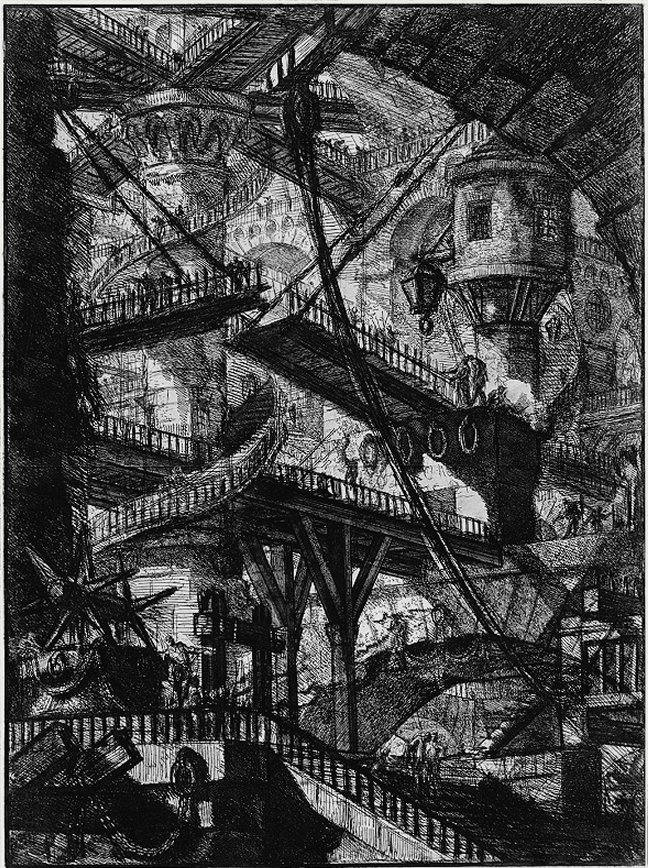Did you ever hear of Giovanni Battista Piranesi?
He was born in Venice, and lived from 1720 to 1778. He was an artist famous for his etchings and engravings of Rome. He measured a large number of the ancient monuments. He supervised the restoration of a church, published ingenious and bizarre designs for chimney-pieces and original furniture, and after his death his son published a collection of his plates, which came out at twenty-nine folio volumes containing about 2000 prints. (Thank you, wikipedia.)
But the interesting thing, from my current point of view, is his Prisons.
Piranesi’s Prisons (Carceri d’invenzione or ‘Imaginary Prisons’), is a series of 16 prints that show enormous subterranean vaults with stairs and mighty machines. They’re validly described as Kafkaesque or Escher-like. The pictures are the sort of thing that would be filmed by a crossover effort between Peter Jackson and Clive Barker. They show huge dark ruined arches, stairs, machineries, cells.
Piranesi started the series in 1745, when he was in Venice (from 1743 to 1747 – after that, he was in Rome). The first state prints were published in 1750 and consisted of 14 etchings, untitled and unnumbered, with a sketch-like look. The original prints were 16” x 21”. For the second publishing in 1761, all the etchings were reworked and numbered I–XVI (1–16).
Here’s a complete set, on a Russian site: http://gravures.ru/photo/dzhovanni_piranezi/tjurmy/10
And here’s a set of the first state 14 etchings: http://www.let.leidenuniv.nl/Dutch/Renaissance/Facsimiles/PiranesiCarceri1750/
This is Plate VII: The Drawbridge:

Plate VII: The Drawbridge
I’m writing about a dreamlike dark Venice. These really should come into it.
